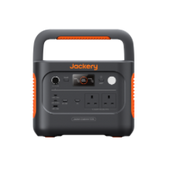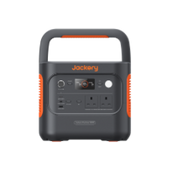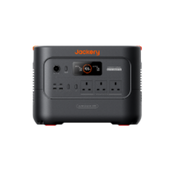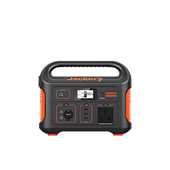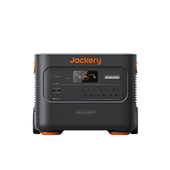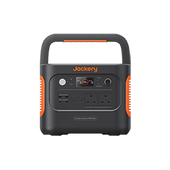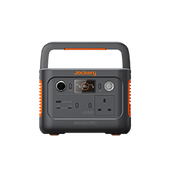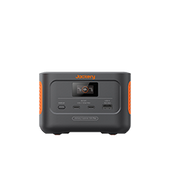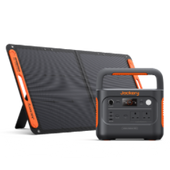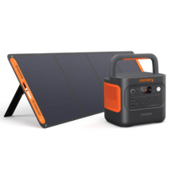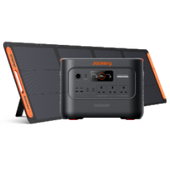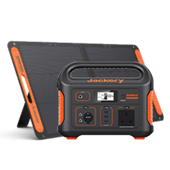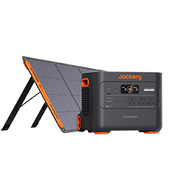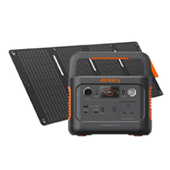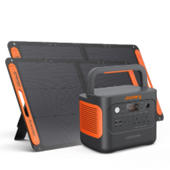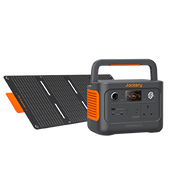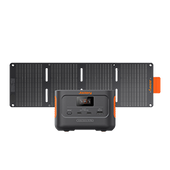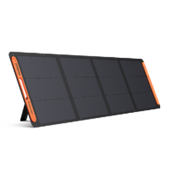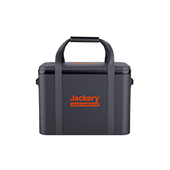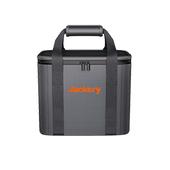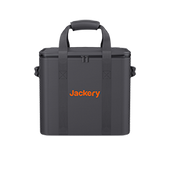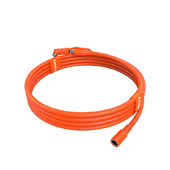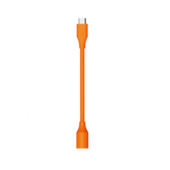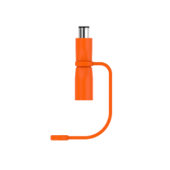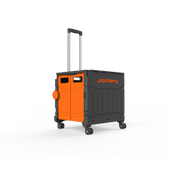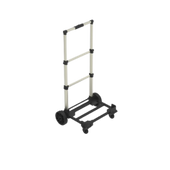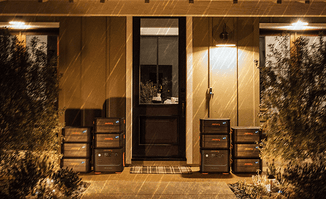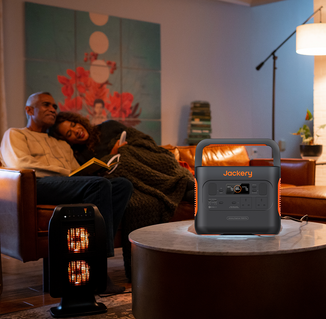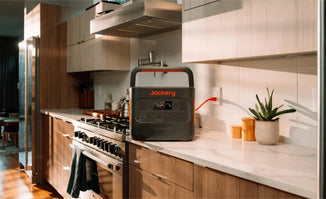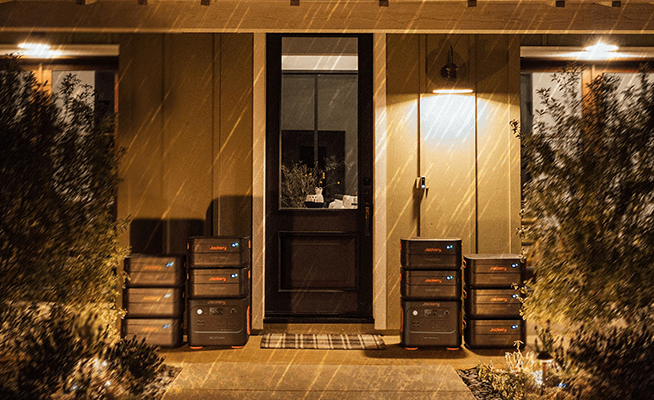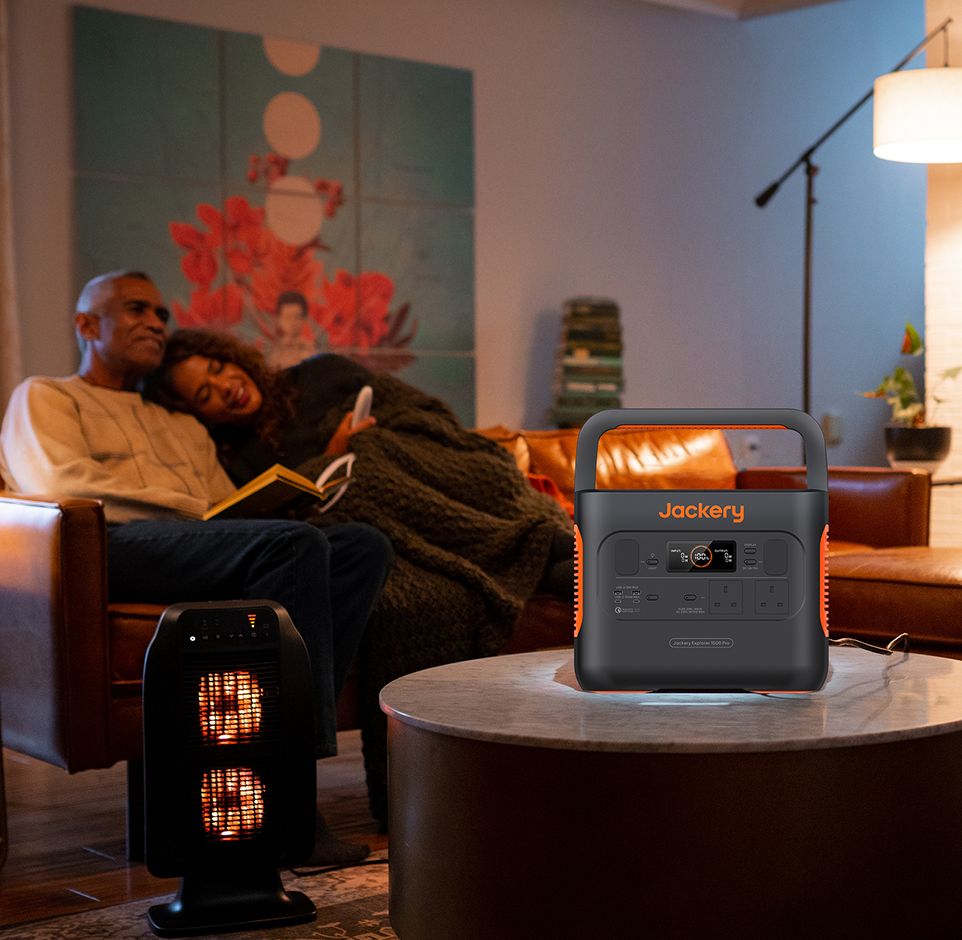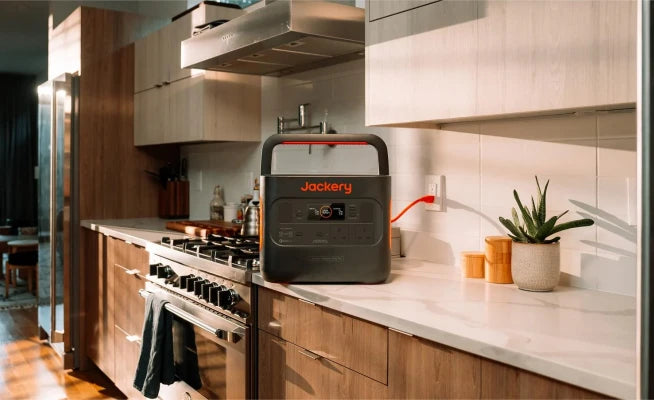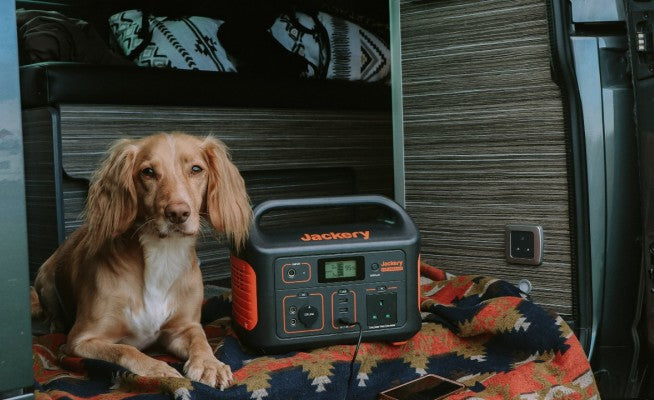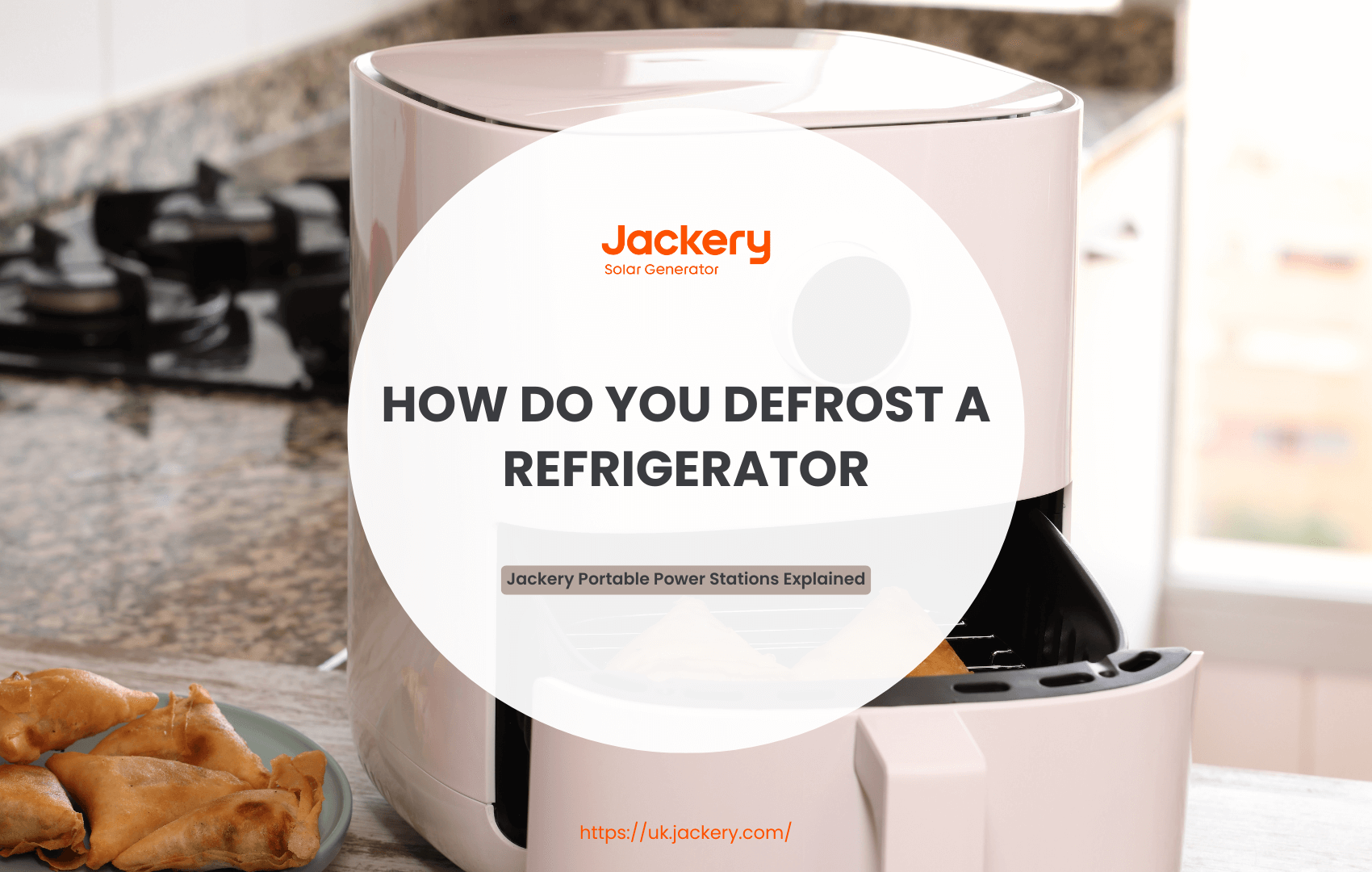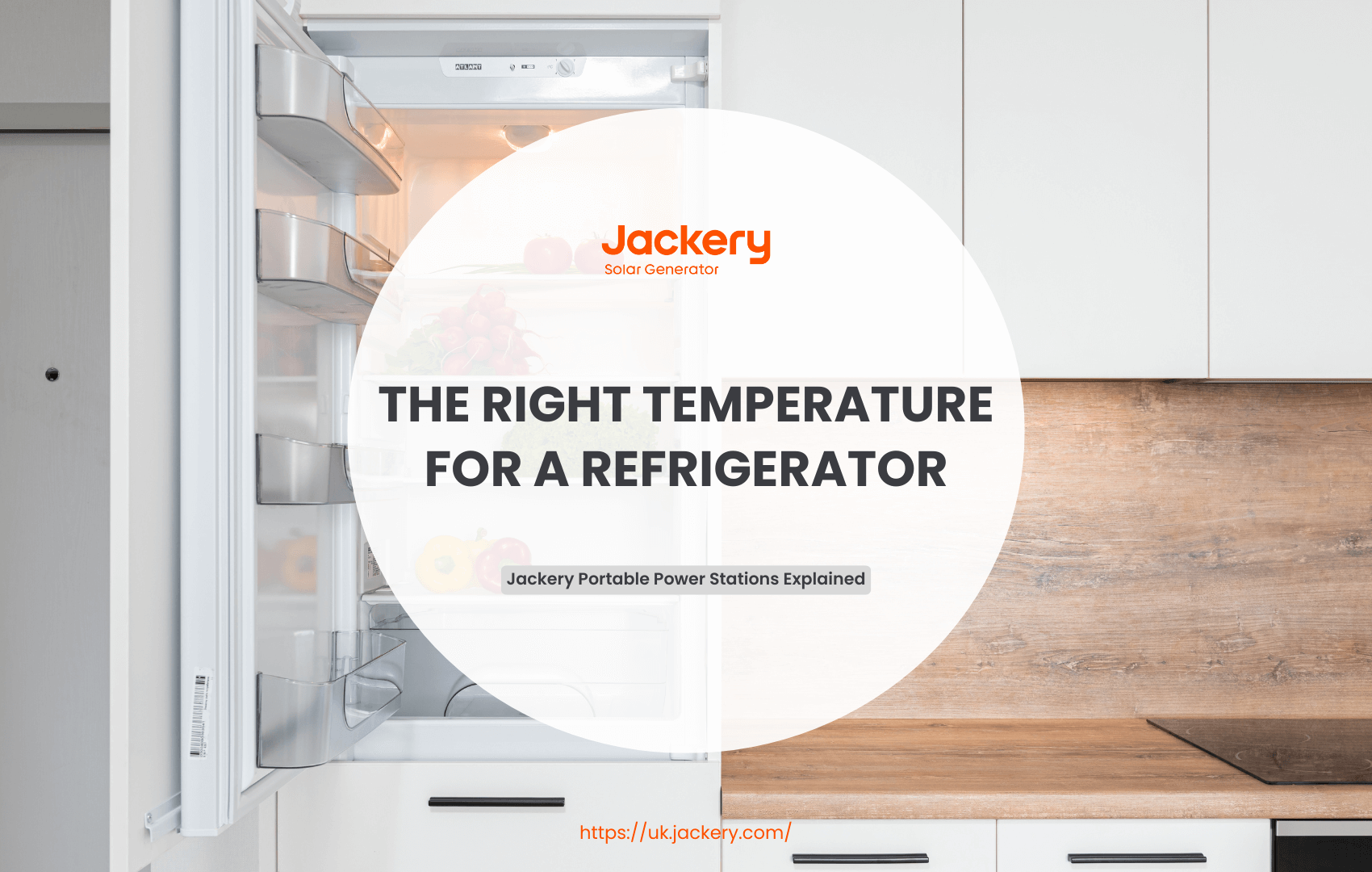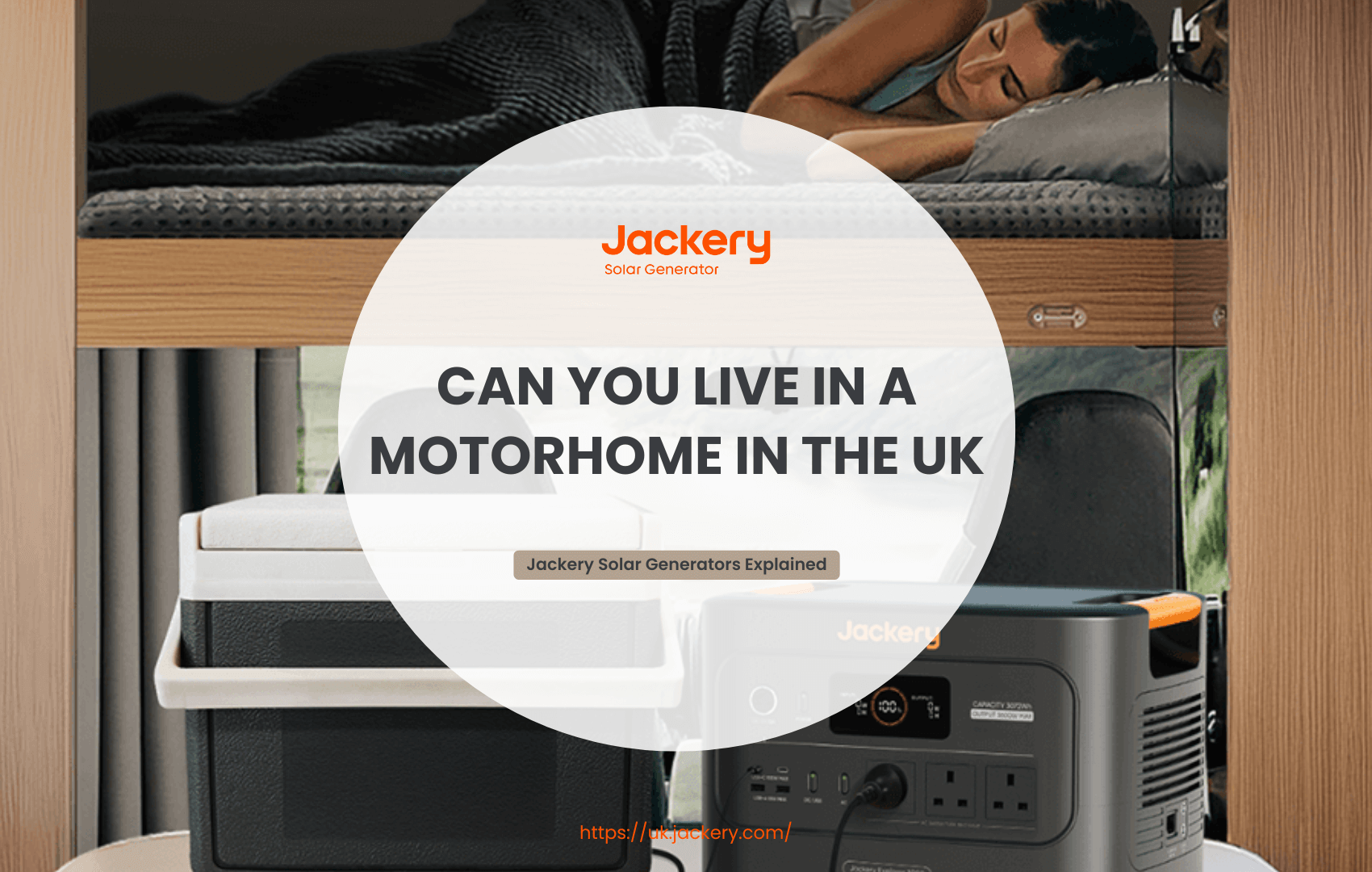Air fryers have revolutionised the way people in the UK cook, offering a healthier and faster alternative to traditional ovens. However, the recent increase in energy prices is making it more expensive to use these popular gadgets. The UK's electricity price cap has increased to 27.03p per kWh as of April 2025. This means that the average annual cost of running an air fryer has increased by £11.
Even if the price increases, air fryers are still more energy-efficient than ovens, microwaves, or hobs for many types of food. This guide discusses the actual cost of running an air fryer, its comparison to other appliances, and how to conserve energy to maximise its efficiency and minimise your electric bills.
|
Key Takeaways: |
|
Air Fryers Have Experienced an Average Price Rise of £ 11 Since April.
Air fryers have gained popularity in recent years because they cook food faster and more effectively than traditional techniques.
Due to their ease of use, more than half of UK households currently own one. They cost less to run than an oven and are considered healthier due to the minimal amount of oil used. However, using an air fryer might still be costly, especially if you use it for an extended period. This cost is projected to increase within a few weeks.
According to Ofgem, the UK energy cap price increased by 6.4% commencing April 1. This means that each family will pay more for consuming the same quantity of energy.
The government office has set the annual ceiling at £1,849 for all homes that pay by credit card, direct debit, a prepayment meter or are on Economy 7.
The price increase follows Ofgem's announcement that its price cap rose by an average of £111 per home per year from April to June. This marks the third consecutive increase. Households with a typical standard variable tariff see their annual rates climb from £1,738 to £1,849.
Currently, electricity costs an average of 27.03p per kWh, compared with the previous 24.86p per kWh before April 1.
Economic Advantages of an Air Fryer
Most air fryers are compact and aesthetically pleasing, allowing them to blend in with a wide range of kitchen styles and sizes. The air fryer market is expected to grow by 7% between 2024 and 2032, as more people seek healthier culinary options.
Air fryers offer numerous benefits, including saving money and reducing energy consumption. A standard 4-quart air fryer, for instance, uses 1,500 watts, which is almost half the power of a regular full-size oven.
An air fryer uses half the electricity, making it 50% more efficient than a full-sized electric oven.
When it comes to prices, utilising a 1500W air fryer for 30 minutes once a day costs around 12.6p per day, £0.88 per week, or £3.78 per month. These costs are much lower than those of running a full-size oven for the same duration.

So, if you decide to get an air fryer, what else can you do with it than make crunchy, delectable nuggets?
Healthy cooking: Air fryers use hot air to cook food, requiring little to no oil, reducing up to 70% of total calories and fat.
Fast and efficient cooking: Air fryers save both energy and time. They heat up rapidly thanks to high-speed convection, reducing cooking time.
Versatile use: Air fryers are capable of grilling, baking, roasting, drying, and reheating in addition to replicating the deep-fried experience.
Simple to operate and maintain: Most models include pre-programmed cooking schedules for a variety of meals. Furthermore, air fryers are nonstick and easy to clean.
Room-saving: If you don't enjoy cooking or have limited room, you can safely replace your oven with another countertop appliance, such as an air fryer.
Energy-efficient: Cooking food faster and in a more compact cooking chamber (compared to ovens) resulted in a more concentrated heat source, lowering energy usage.
Air fryers are a game-changer in terms of kitchen efficiency. They provide an appealing combination of quick cooking times, low energy consumption, and cost-effectiveness.
Energy Consumption of Air Fryers
The kitchen contains the most energy-consuming gadgets. However, air fryers are not on that list and often use far less energy than standard ovens.
Air fryers typically utilise between 1,000 and 1,800 watts of power, with the average type needing around 1,500 watts. This is similar to tiny kitchen appliances such as coffee makers and toaster ovens. The average air fryer consumes approximately 1.4-1.7 kW/h (kilowatts per hour) of power.
If used every day for an hour, this will add around £0.30-£0.50 to your monthly electric cost. In comparison, typical ovens use between 2 and 5 kWh of energy. This difference occurs for the following reasons:
1. Convection heating circulates hot air around food, resulting in speedier cooking times.
2. Full-load frying enables the air fryer to operate at its most efficient level.
3. Preheat efficiency—This option is crucial for energy savings. Preheat only when necessary, such as when cooking large foods that take longer to reach the appropriate cooking temperature.
4. Air fryers with greater wattages cook food faster, requiring less energy. However, it is vital to select the proper size for your air fryer and avoid high-wattage fryers if your family size does not necessitate it.
5. Air fryers have smaller cooking chambers than ovens, which allows for more efficient heat distribution, resulting in faster and more consistent cooking.

Air fryers generally use between 800 and 2,000 watts of power, depending on the brand, model, and size. The wattage on the package represents the highest amount of electricity the air fryer can consume, but it does not always (or generally) consume the rated wattage.
However, several factors influence the electricity consumption of air fryers, including cooking temperatures, the frequency of use, and the amount of food cooked.
When you increase the temperature, the fryer's working temperature rises. Logically, the higher the temperature, the greater the energy use.
However, even at the same temperature, the length of time you cook your food is essential. Cooking a complete chicken takes longer than cooking a single chicken breast; therefore, more electricity is required.
The chart below illustrates how much air fryers cost to operate each hour based on the April 2025 electricity price cap of 27.03p per kWh:
|
Appliance |
Consumption/hour |
Cost/hour |
|
Small air fryer (1 basket) |
0.8 kWh |
20p |
|
1.3 kWh |
34p |
|
|
1.4 kWh |
38p |
|
|
1.6 kWh |
43p |
|
|
Large air fryer (2 baskets) |
1.8 kWh |
49p |
|
2.0 kWh |
54p |
|
|
2.5 kWh |
68p |
|
|
2.8 kWh |
76p |
(Data Source: Uswitch)
Energy Consumption of Air Fryers vs. Ovens
What are the differences between air fryers and electric or gas ovens? The table below provides a basic comparison; however, it does not account for factors such as air fryers, which typically cook food 20% faster than ovens, or gas ovens, which reach temperature more quickly than electric ovens.
|
Appliance |
Energy rating |
Cost/hour |
Cost/year |
|
Electric oven |
2-5 kWh |
54p-£1.35 |
£108-£270 |
|
Gas oven |
1.3-1.7 kWh |
9-12p |
£18-£23.76 |
|
Compact air fryer |
0.8-2 kWh |
22-54p |
£44-£108 |
|
Large air fryer |
1.8-2.8 kWh |
49-76p |
£98-£152 |
(Data Source: Uswitch)
Prices are based on the April 2025 price cap (27.03p per kWh for electricity and 6.99p for gas). The annual cost is based on cooking for a total of 200 hours (about 33 minutes per day).
Air Fryers vs.Other Cooking Gadgets
While air fryers are less expensive to operate than electric ovens, they are not the most cost-effective method for preparing meals. Here's how air fryers differ from other electrical cooking appliances:
|
Appliance |
Consumption/hour |
Cost/hour |
|
Compact air fryer |
0.8-2 kWh |
22-54p |
|
Large air fryer |
1.8-2.8 kWh |
49-76p |
|
Microwave |
0.6-1.0 kWh |
16-27p |
|
Slow cooker |
0.2-0.4 kWh |
5-11p |
|
Pressure cooker |
0.7-1.2 kWh |
19-32p |
(Data Source: Uswitch)
Cost is based on the April 2025 price cap.
While these alternatives are more energy-efficient methods to cook your food, they do not deliver the same crispy results as air fryers. For example, a microwave is ideal for reheating food, whereas a slow cooker is best for making one-pot meals such as stews.
What Affects The Amount of Energy An Air Fryer Uses?
Several factors determine the amount of energy an air fryer uses:
Size: The size of an air fryer's basket or drawer (if it has both). Select the best model that suits your household's needs.
Cook temperatures: The greater the temperature, the more energy is used.
Cooking time: Consider this when comparing models, even though a 2,800 kWh air fryer may use two to three times as much energy as a smaller model. It will also cook food faster.
Preheat efficiency: If your air fryer offers this setting, use it to shorten the time it takes for larger, heavier foods to reach the appropriate cooking temperature.
Cooking frequency: The frequency at which you use your air fryer determines the amount of energy it consumes; if you use it every night, it will use more energy than if you only use it once or twice a week. However, if you use your air fryer as a substitute for your main oven, you will always save electricity.
Cooking amount: Cooking smaller meals requires less energy; thus, an air fryer is far more efficient than an oven when cooking for one or two people.
How Much Does It Cost to Run an Air Fryer?
There are various reasons why you should consider purchasing an air fryer, including healthier, tastier food that cooks faster and leaves less mess. An air fryer takes up less room than an oven, and some models can roast, broil, and bake food in addition to air fry it.
However, there is one more convincing incentive to invest in an air fryer: considerable energy savings. The amount you save and the time it takes to recoup your investment will vary depending on the model you purchase. However, from an economic standpoint, an air fryer makes the most sense for people who live solely or in households of two: a compact air fryer can be purchased for less than £50, and by switching most, if not all, of your meals to this from your oven, you can recoup that cost within six months to a year.
Air Fryer Costs Explained
A household on a typical standard variable tariff will see an increase in annual bills from £1738 to £1849. Additionally, the average cost of electricity is currently 24.886p per kWh, which will rise to 27.03p per kWh on April 1. According to the renowned comparison website Compare, the average air fryer uses between 800 and 2,000 watts per hour to heat. The latest versions of air fryers are designed to be more energy-efficient, which can potentially result in lower operating expenses. Furthermore, higher-powered air fryers have quicker cooking durations.
A typical air fryer costs roughly 35p to operate, which equates to around £127 per year when used for one hour each day. However, when the price hike takes effect next week, the cost per hour will rise to 38 pence. This will result in an anticipated annual expense of around £138.12. This is an overall increase of £11.09 per year. This is still more affordable than an oven. According to Go Compare, "Our guide on air fryer vs oven energy costs revealed that air fryers are cheaper to run than conventional ovens, simply because ovens use much more energy, ranging from 2,000 to 5,000 watts on average." This can vary based on the oven's heat setting."
It added: "It costs approximately 49p per hour to run an ordinary oven (0.63kWh). Don't forget that people like air fryers because they cook food rapidly, which saves energy. A bag of frozen chips takes 20 to 25 minutes to cook in the oven, but only eight to 20 minutes in an air fryer. To save energy, only leave them on for as long as they are in use."

What's The Most Energy-Efficient Air Fryer?
Most modern air fryers include a basic range of programs, including air fry, roast, bake, reheat, grill, steam, and dehydrate. The model and brand determine the program selection.
When selecting an energy-efficient air fryer, consider your household size, food choices, and available countertop space.
In general, homeowners prefer air fryers that are compact, easy to use and maintain, versatile, dishwasher-safe, and, most importantly, inexpensive. When searching for your ideal air fryer, consider the specific operations you want it to perform, how frequently you'll use it, and for how many people.
Air Fryers vs. Ovens
Air fryers use less energy than regular ovens, especially when cooking small amounts of food. For instance, cooking chicken in an air fryer can use less than half the energy required to bake it in an oven.
This is because air fryers have a smaller frying area and a powerful fan, which allows them to cook food faster and more efficiently. A basic air fryer consumes between 1,200 and 1,500 watts, whereas a regular oven can use up to 5,000 watts. In real life, cooking a chicken in an air fryer may cost roughly 12p, compared to 26p in the oven. Using the air fryer frequently for modest meals can result in significant annual savings.
|
Appliance |
Power Consumption (Watts) |
Cost per Hour (pence) |
Cooking Time for Chicken (minutes) |
Cost per Cooking Session (pence) |
|
Air Fryer |
1,500 |
12.6 |
25 |
12.6 |
|
Oven |
3,000 |
25.2 |
40 |
26 |
(Data Source: Green Match)
This implies that, over time, an air fryer can significantly reduce electricity expenditures. According to certain studies, air fryers use less energy because they cook faster.
Tips for Maximising Energy and Cost Savings of Air Fryers
There are tried-and-true strategies for keeping your air fryer running at peak efficiency:
Fill the chamber up to its maximum capacity. You successfully trap hot air, ensuring that each piece of food receives adequate heat to cook properly.
Use preset programs for cooking. Choose an air fryer with a variety of cooking programs. This frees up your hands and time while optimising cooking times and temperatures for individual recipes without the need for manual modifications.
Clean your air fryer periodically. A blocked air filter can impede the flow of hot air, resulting in longer cooking times, undercooked food, and increased energy consumption.
Try multitasking. To save energy, try cooking many items at the same time.
Pick the right size for your air fryer. It takes more energy to get the same outcome with a bigger air fryer. If there are only two people in your household, consider a fryer with lower power consumption to save energy.

To make the most of your air fryer in terms of cost savings, consider the following suggestions:
Tip 1: Before cooking, preheat the air fryer for a few minutes to ensure uniform frying and reduce cooking time. Unlike ordinary ovens, they frequently require 10-15 minutes to achieve the desired temperature.
Tip 2: Making use of the air fryer's capability by cooking several foods at once is known as batch cooking.
Tip 3: Prevent Overcrowding. Avoid packing the basket too full as this may hinder airflow and cause uneven cooking.
Tip 4: Air fryers can quickly cook a wide variety of dishes, including proteins, vegetables, and baked goods.
Tip 5: While air fryers require less oil, a small spray can help produce a crispier finish without adding too many calories.
Tip 6: Maintaining the air fryer's performance and extending its lifespan requires routine cleaning.
Tip 7: Using an alternative way to power the air fryers and other kitchen appliances to save on the electric bill. We highly recommend the Jackery Portable Power Station for powering them with its higher capacity and portability. Air fryers are known for their efficiency in cooking, but they still draw a significant amount of power when in use. The primary way a Jackery helps save on electric bills with an air fryer is by leveraging time-of-use (TOU) billing and solar charging.
Jackery Portable Power Stations for Air Fryers
Many utility companies implement TOU billing, where electricity rates are higher during "peak hours" (e.g., late afternoon/early evening when demand is high) and lower during "off-peak hours" (e.g., overnight).
You can charge your Jackery Portable Power Station during off-peak hours, when electricity is at its cheapest. Then, during peak hours, when you're likely to use your air fryer for dinner, you can power it directly from Jackery's stored energy. This avoids paying the higher peak rates for high-wattage appliances, such as air fryers. Over time, these small savings can add up.
When you pair a Jackery Portable Power Station with Jackery SolarSaga solar panels, you can use unlimited and free solar energy.
Jackery Explorer 3000 v2
Choosing the Jackery Explorer 3000 v2 to power an air fryer, particularly for saving on electric bills, makes sense due to its high capacity and output, ability to integrate with solar panels, and features for optimised energy usage.
Air fryers typically consume between 800 and 2000 watts (W), with many standard models ranging from 1200 to 1800W. The Jackery Explorer 3000 v2 offers a substantial 3072Wh capacity and a continuous 3600W output (with a 7200W surge peak). This means it can easily handle the power demands of most air fryers, even larger ones, and potentially other appliances simultaneously.

Solar Charging: The Explorer 3000 v2 supports up to 1000W of solar input. By pairing it with Jackery SolarSaga 100W or 200W solar panels, you can charge the power station using free, renewable solar energy. This allows you to cook with your air fryer without drawing power from the grid, directly reducing your electricity consumption and bills. Jackery even claims that prioritising solar usage can lower electricity bills by up to 22%.
Off-Peak Charging: If solar power isn't always available, you can charge the Jackery Explorer 3000 v2 when electricity rates are lower, such as at night or on weekends. Then, utilise the stored energy to power your air fryer during peak hours, when electricity is more expensive.
Efficient Usage: The LiFePO4 battery in the Jackery Explorer 3000 v2 can be charged over 4000 times, which means it will last a long time and store energy well. Its "ZeroDrain" technology also stores a significant amount of power (up to 95% after 365 days), which reduces energy loss.
Portability and Versatility: Despite its high capacity, it's designed to be relatively compact and portable for a 3kWh power station. This makes it suitable for not only home use but also for outdoor activities, RVs, camping, or as an emergency backup during power outages, allowing you to use your air fryer wherever you need it.
|
Jackery Explorer 3000 v2 Running Time |
|
|
Small Air Fryer (800-1000W) |
2.5-3.1H |
|
Medium Air Fryer (1200-1500W) |
1.6-2H |
|
Large Air Fryer (1800-2000W) |
1.2-1.4H |
(*The working hours are only for reference; the actual working hours depend on your usage.)
Jackery Explorer 2000 Plus
The Jackery Explorer 2000 Plus is an excellent choice for powering an air fryer, particularly when aiming to reduce electricity bills, due to its high power output, substantial capacity, rapid recharging capabilities, and expandability, all of which facilitate energy arbitrage and solar integration.

High Wattage Output (3000W continuous, 6000W surge): Air fryers are notoriously high-wattage appliances, often drawing between 800W and 1800W, with many standard models around 1500W. They also experience a significant surge in wattage when the heating element first turns on.
The Explorer 2000 Plus can deliver 3000W continuously and 6000W during a surge peak. This is more than enough to power even the largest and strongest air fryers, ensuring they operate smoothly without triggering the power station's overload protection. The 2000 Plus can easily manage the air fryer's surge, but smaller power stations may struggle with it.
Large Capacity (2042.8Wh expandable to 12kWh): While air fryers cook quickly, they still consume a decent amount of energy per use. A 1500W air fryer powered by a standard 2042.8Wh Explorer 2000 Plus can run for approximately 2.3 hours. This is more than enough for multiple air frying sessions or to handle complete meal preparation. The "Plus" in the 2000 Plus signifies its expandability. You can add up to 5 additional 2kWh battery packs, increasing the total capacity to a massive 12kWh.
Extended Solar Utilisation: A larger capacity allows you to store more solar energy. This means you can charge the power station fully during sunny periods and then use that free, clean energy to power your air fryer well into the evening or on cloudy days, drastically reducing your reliance on grid power for cooking.
Fast AC Charging: The 2000 Plus can be fully recharged from a wall outlet in approximately 2 hours. This rapid charging capability means you can quickly top it off during off-peak hours, even if you forgot to charge it overnight.
Exceptional Solar Charging: When paired with Jackery SolarSaga solar panels (e.g., 6 x 200W panels), the 2000 Plus can recharge in as little as 2.4 hours. This makes it an incredibly efficient "solar generator" for daily use.
|
Jackery Explorer 2000 Plus Running Time |
|
|
Small Air Fryer (800-1000W) |
1.6-2H |
|
Medium Air Fryer (1200-1500W) |
1.1-1.4H |
|
Large Air Fryer (1800-2000W) |
0.8-0.9H |
(*The working hours are only for reference; the actual working hours depend on your usage.)
FAQs
The following are the frequently asked questions about the air fryer running cost:
1. How much does it cost to run an air fryer for 1 hour in the UK?
The cost of running an air fryer for an hour in the UK varies depending on the wattage and the current energy price, typically ranging between 19p and 60p. For example, with the current energy price cap, a 1500W air fryer would cost around 37p per hour to operate.
2. Will an air fryer raise my electric bill?
Air fryers consume less electricity than other options, such as full-size ovens. Most air fryers utilise little electricity due to their quick cooking durations and compact size. The amount of energy consumed will vary depending on usage habits, cooking temperature, efficiency, and other factors.
3. Are air fryers expensive to run in the UK?
When it comes to prices, utilising a 1500W air fryer for 30 minutes once a day costs around 12.6p per day, £0.88 per week, or £3.78 per month. These costs are much lower than those of running a full-size oven for the same duration.
4. Are air fryer running costs set to increase in the UK from April?
Experts warn that air fryer users will face a £12 increase in annual energy costs, with UK homes also expected to see price increases. The increase, effective April 1, 2025, implies that households may now spend roughly £64 per year to run their air fryers.
5. Is it expensive to have an air fryer on for 50 minutes?
Yes, air fryers are inexpensive, particularly when compared to ovens. According to the current electricity tariff, the average 1,500 W air fryer costs roughly 51p per hour. Since air fryers have an average cooking time of 30 minutes or less, their cost per usage is approximately 17p.
Final Thoughts
The cost of running an air fryer has increased slightly due to rising energy rates in the UK. However, these gadgets are still an excellent choice for quick, healthy cooking. Air fryers are still a lot cheaper than regular ovens for most households, especially those with one or two people. People can make better, more environmentally friendly cooking decisions if they understand how wattage, frequency of use, and meal size affect their running expenses. Air fryers can still save you money and energy, even when electricity prices rise, if you use them carefully and follow a few simple rules, such as cooking in batches and avoiding preheating when unnecessary.

